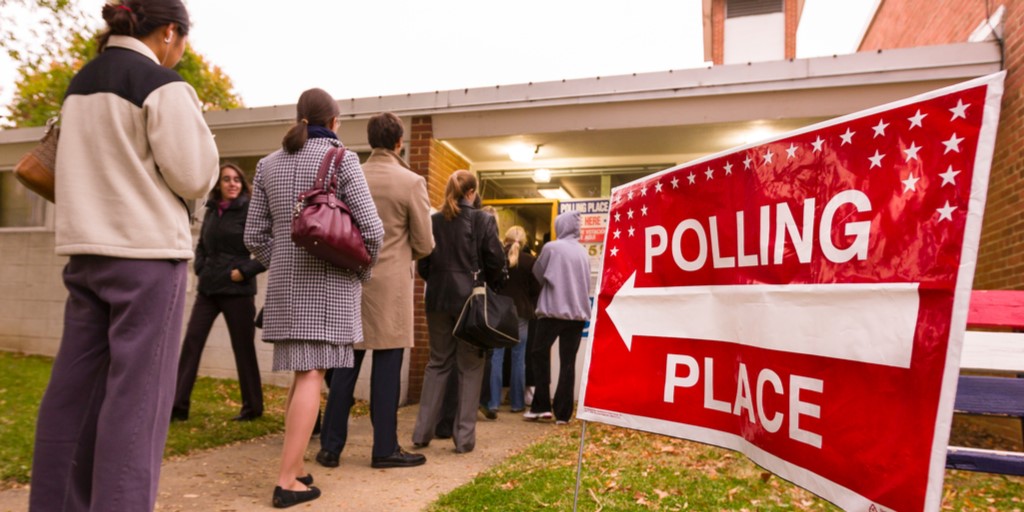Rational Voter, Meet Median Voter
In previous posts I’ve discussed why, contrary to (much) conventional wisdom, even the basic rational voter model predicts positive voter turnout in equilibrium. I then explored ways to gin up that number to yield the levels of turnout that we see in most mass elections.
People use their votes not only to determine officeholders in specific elections, but to signal their political and policy preferences to all officeholders and to their fellow voters. Many might also turn out to vote to “mini-max” the regret they would feel if they did not turn out to vote, and someone other than their preferred candidate won the election. Finally, voters might show up on election day because casting a ballot is a democratic sacrament, an act of solidarity uniting citizens with each other and with their republic.
There’s another challenge to the notion that the rational voter model predicts positive turnout, and that challenge comes from the implications flowing from the median voter theorem. Resting on several important assumptions—a one-dimensional policy space along which voters are arrayed with single-peaked preferences, selection by voters of either of two candidates or parties, a turnout rate of 100 percent, and others—the median voter theorem holds that the platforms articulated by the two major political parties converge to the preference of the median voter.
Despite its restrictive assumptions, the median voter model accounts for intuitions many have regarding the nature of U.S. elections. The convergent implication of the median voter model would imply the oft-expressed sentiment that there’s “not a dime’s worth of difference” between the political parties.
But the simple median voter theorem also has implications for the rational voter model. Recall that the basic rational voter model has three parameters: the benefit, B, of your candidate winning; the cost, c, of voting; and the probability, p, that your vote is pivotal (that is, that your vote makes the difference between your candidate winning and losing).
The median voter theorem, however, predicts that the two party platforms converge to the preference of the median voter. This means there is no policy difference between the parties. But in the terms of the rational voter model, the median voter theorem predicts that B goes to zero. But if B goes to zero, then even a minimal cost (c) to voting implies the expected value of voting is less than zero. And it would be less than zero for any number of voters.
This prediction, however, reflects the bite of one of the median voter theorem’s simplifying assumptions: namely, the assumption that 100 percent of the voters show up to cast a ballot. Note that this by itself assumes away the problem it ostensibly creates for turnout predicated on the rational voter model.
We need to relax the assumption to create the asserted problem for the rational voter model. But doing so then creates the solution to the ostensible conundrum. As voters drop in or out of voting, the position of the median voter changes, and the platform for the parties then changes in response to the changing position of the median voter. (Recall the “signaling” rationale for voter turnout as one of the fixes for the seemingly low, albeit positive, turnout predicted by the basic rational voter model.)
There are other reasons why party platforms might diverge. Institutional accounts speak of primary elections and platform “stickiness,” uncertainty over voters’ policy preferences, learning on the part of voters and beliefs about possible persuasion on the part of party elites, et cetera. In any event, there are a number of fixes such that the implications of the median voter model don’t really threaten the claim that the rational voter model predicts positive turnout.
A broader criticism of the instrumental logic of the rational voter model takes aim at the assumption that voters are motivated by policies and policy positions. Considering this argument would take us too far afield in this post. Nonetheless, it seems obvious that “tribalism” motivates a lot of partisan behavior. This is nothing new, as James Madison observed that the formation of factions does not require actual differences between people; people can gin up differences out of nothing.
I doubt the argument can be taken to the extreme that policy differences don’t matter at all. There is an interplay between policy positions and tribalism in creating partisan commitments and voter turnout. In any event, rational voters turn out to vote, notwithstanding the oft-repeated conventional wisdom positing the opposite.


